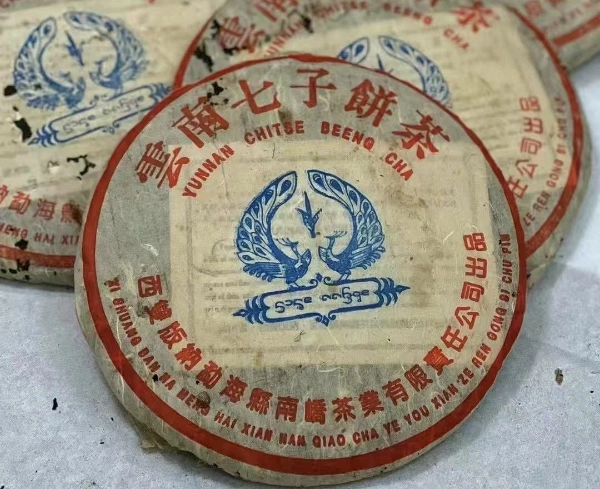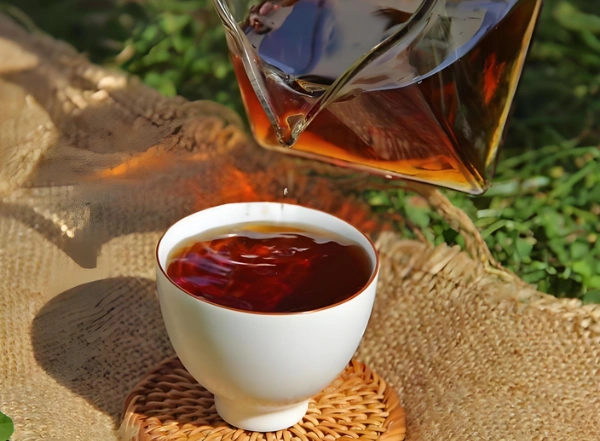Pu erh tea pairing with food transforms every meal into a sensory celebration. Imagine pouring deep amber tea alongside a plate of earthy mushrooms and feeling the tea’s gentle astringency elevate each bite, while its smooth finish cleanses the palate. Whether you crave the warmth of pu erh tea after meals, the metabolism boost of pu erh tea for weight loss diet, or the digestive ease of pu erh tea for gut health, this guide will lead you through delicious combinations, brewing tips, and surprising global pairings that awaken both taste and well‑being.
1. Why Pu Erh Tea After Meals Elevates Dining
A cup of pu erh tea after a meal isn’t just tradition—it’s science. Studies show that the polyphenols in pu erh can moderate post‑meal blood sugar spikes and enhance fat metabolism, making pu erh tea pairing with food especially beneficial after rich meals【1】. Its warm, slightly tannic character also soothes the stomach, helping you feel lighter and more satisfied.

2. Flavor Profiles of Pu Erh Tea and Food Compatibility
| Style | Aroma & Taste | Mouthfeel |
|---|---|---|
| Raw (Sheng) | Floral, fruity, brisk | Fresh, clean |
| Ripe (Shou) | Earthy, sweet, cocoa‑like | Smooth, rich |
- Sheng Pu Erh’s bright notes pair beautifully with lighter fare like salads or sashimi.
- Shou Pu Erh’s depth complements hearty dishes such as braised pork or aged cheeses.
Understanding these profiles helps you craft winning pu erh tea pairing with food moments.
3. Savory Matches: Meats, Mushrooms & Umami Delights
Grilled Pork Belly & Ripe Pu Erh
The fat‑cutting tannins in ripe pu erh tea balance the richness of pork belly, while its earthy undertones echo the caramelized crust.
Wild Mushrooms & Raw Pu Erh
Lighter raw pu erh tea brings out the delicate spore‑earth aroma of chanterelles or shiitake, enhancing their umami depth.
For ultimate synergy, serve pu erh tea after meals to cleanse residual oils and reset your palate.
4. Sweet Harmony: Desserts & Pu Erh Tea for Gut Health
Dessert pairing needn’t be sugary: pu erh’s gentle bitterness highlights complex sweets.
- Dark Chocolate & Ripe Pu Erh: The tea’s cocoa notes mirror dark chocolate’s rich profile, while its tannins cut through sweetness.
- Fruit Tarts & Raw Pu Erh: Citrusy or berry‑fruited tarts find a bright counterpart in pu erh tea for gut health, as flavonoids soothe digestion post‑sugar rush.
These combinations make pu erh tea pairing with food equally rewarding at day’s end.

5. Pu Erh Tea for Weight Loss Diet—Light Bites & Tea Synergy
Integrate pu erh tea for weight loss diet with low‑calorie bites:
- Leafy Salads: A drizzle of vinaigrette with a mid‑meal cup of pu erh supports metabolism.
- Steamed Vegetables: The tea’s warm depth adds savor without calories.
- Lean Proteins: Grilled chicken or tofu pair well with ripe pu erh tea, which enhances protein flavors.
By sipping between courses, you maintain steady energy and curb overeating.
6. Global Inspirations: Pu Erh Tea with International Cuisines
Pu erh’s versatility shines across borders:
- Dim Sum: Classic Cantonese buns and dumplings find a perfect partner in ripe pu erh tea, which refreshes after every bite.
- Charcuterie Boards: Aged meats and pâtés harmonize with tea’s tannins and smoky notes.
- Mediterranean Mezze: Hummus, olives, and grilled vegetables pair beautifully with raw pu erh tea, elevating herbaceous flavors.
Whatever your culinary adventure, pu erh tea pairing with food unlocks new dimensions of taste.
7. Brewing & Serving Tips for Perfect Pairings
- Water Temperature:
- Raw Pu Erh: 85–90 °C to preserve floral notes.
- Ripe Pu Erh: 95–100 °C to release rich, earthy flavors.
- Leaf Ratio: 5 g per 100 ml water ensures robust taste.
- Steeping Times:
- 1st infusion: 15 s
- 2nd: 20 s
- 3rd+: +10 s each, up to 6 infusions.
- Timing: Serve tea 5–10 minutes after plating to let dishes settle, then sip between bites.
Following this pu erh tea brewing guide guarantees your food pairings hit every note.

8. Expert Insights: Research on Tea and Digestion
Emerging research underscores tea’s digestive benefits. A 2020 study found that pu erh consumption reduced gastric discomfort and improved gut motility in volunteers after a high-fat meal, supporting its role in pu erh tea pairing with food and gut health【2】.
Conclusion: Crafting Your Own Pu Erh Tea & Food Experiences
Pu erh tea pairing with food is a journey of experimentation and delight. Start small—match a spoonful of risotto with a sip of sheng—and notice how flavors evolve. Gradually build your repertoire, weaving tea into everyday meals and special feasts alike. By combining mindful brewing with thoughtful pairings, you’ll transform every dish into a moment of balanced flavor and lasting well‑being. Cheers to your next pu erh‑infused culinary adventure!



